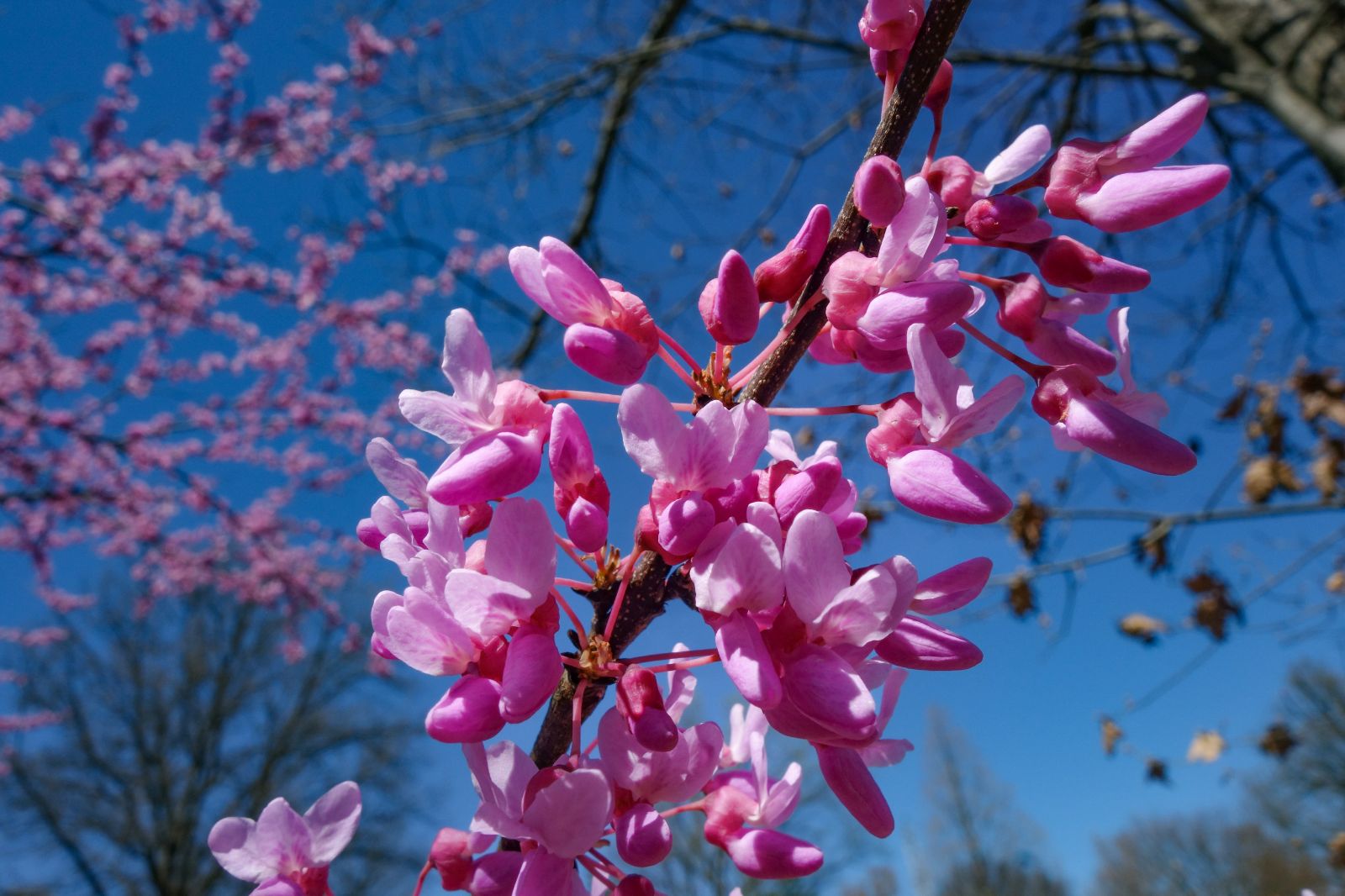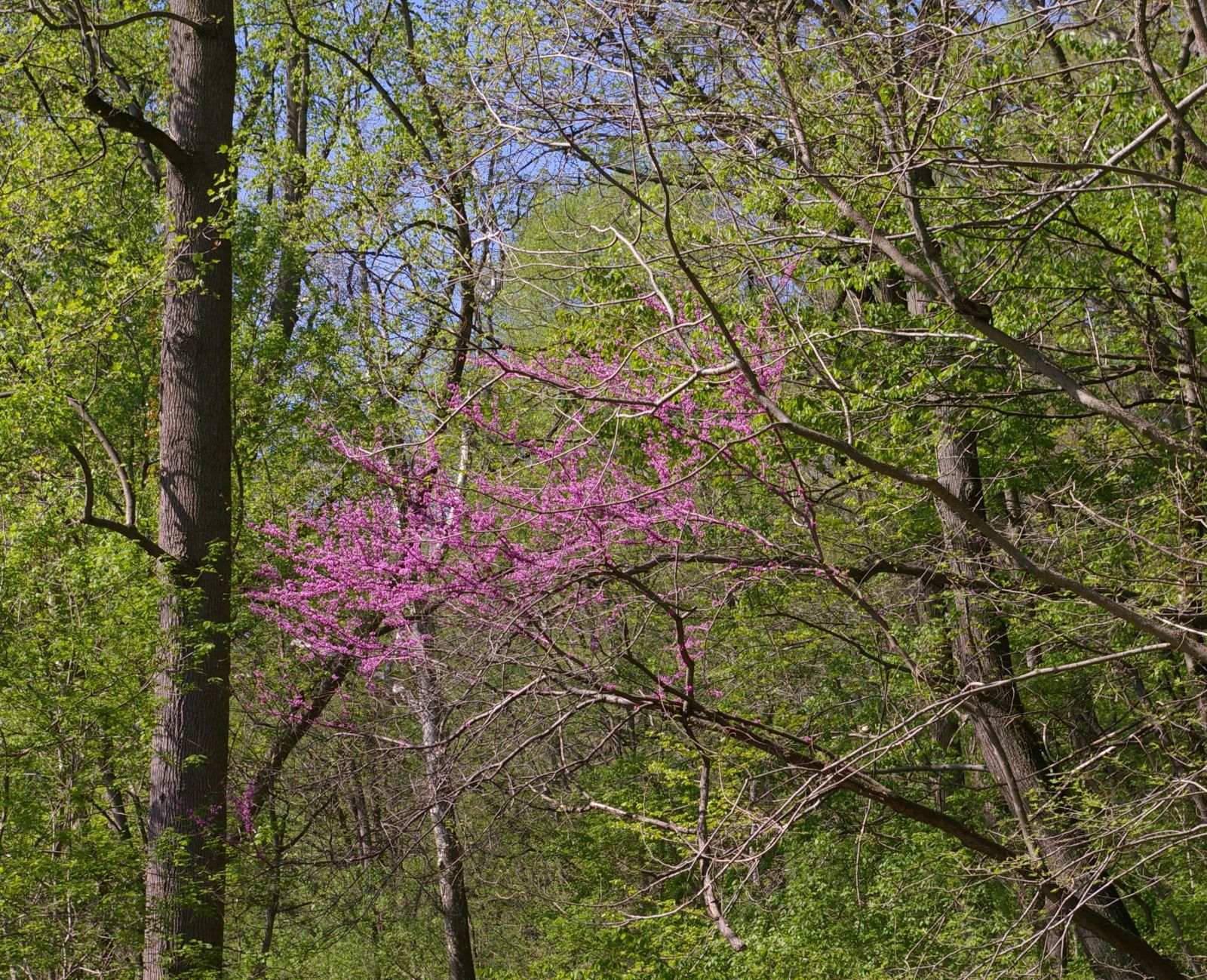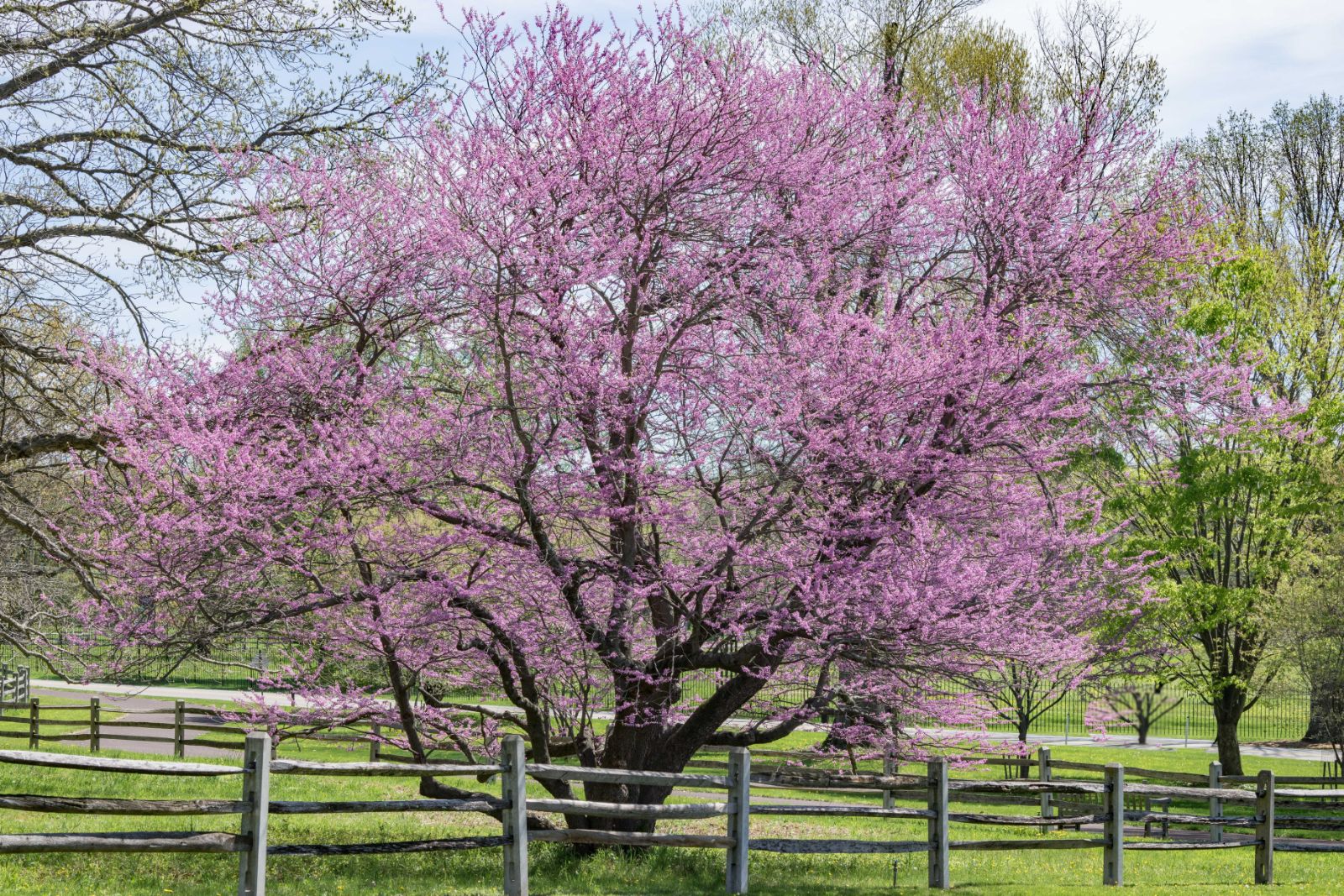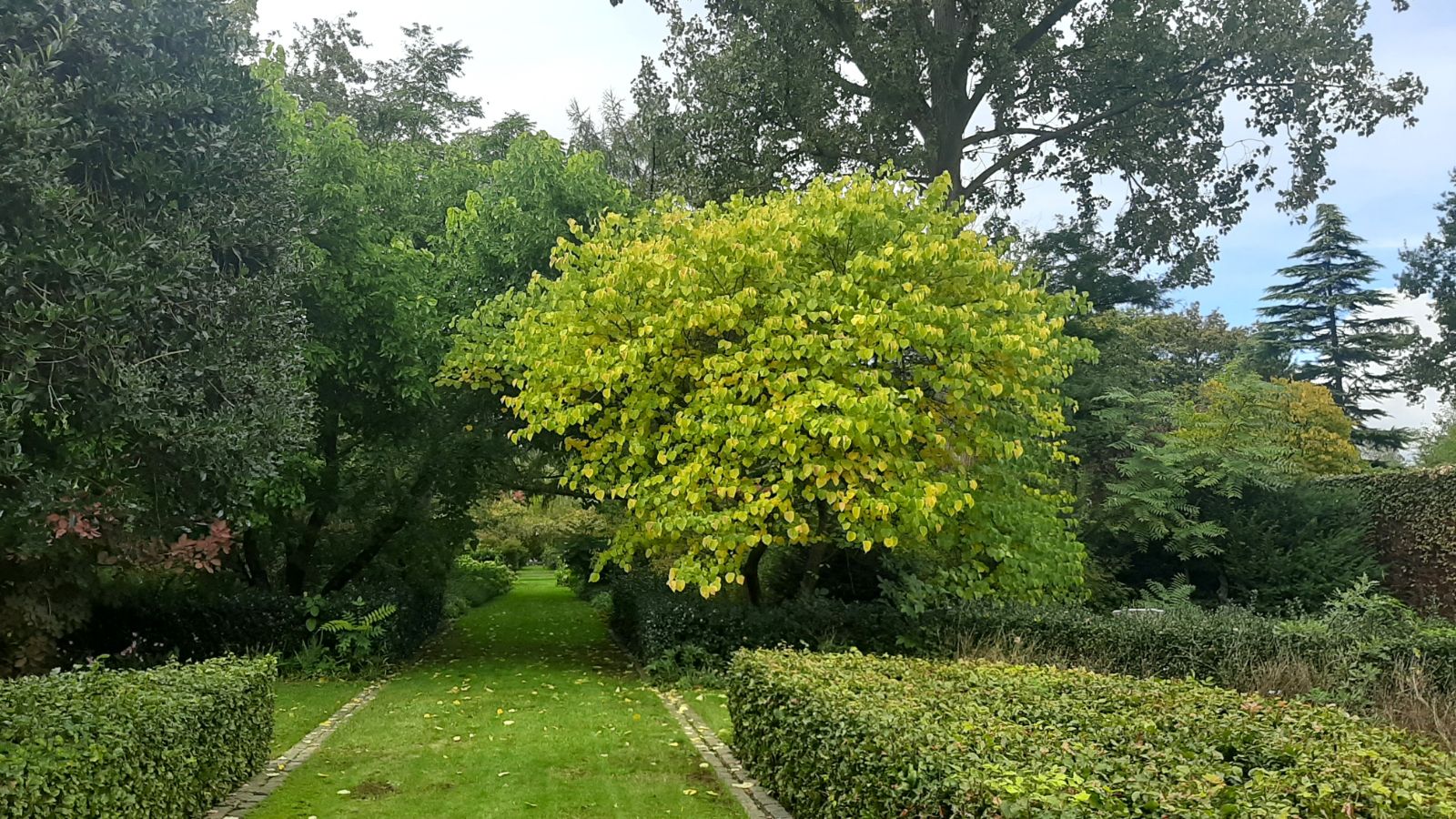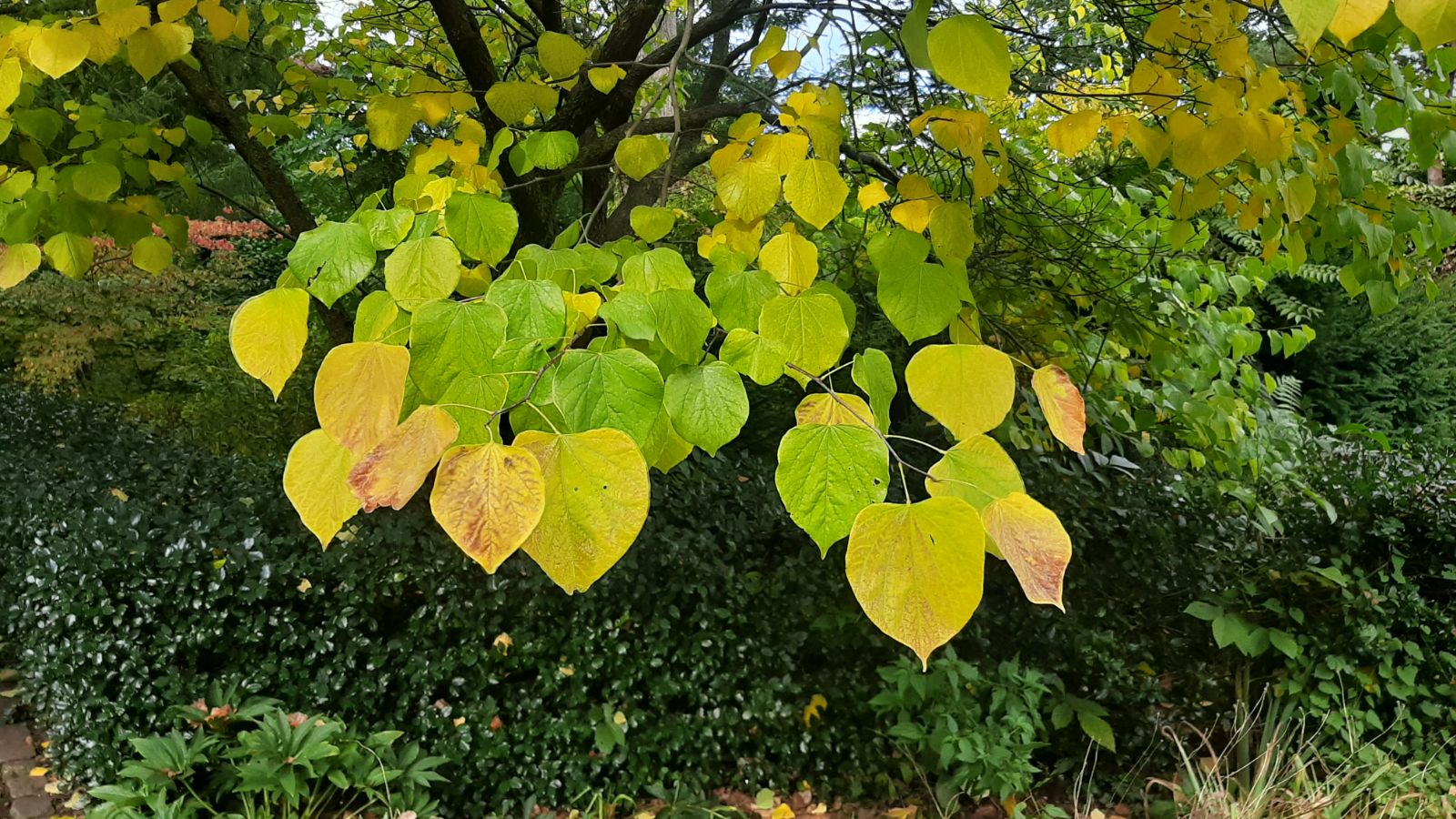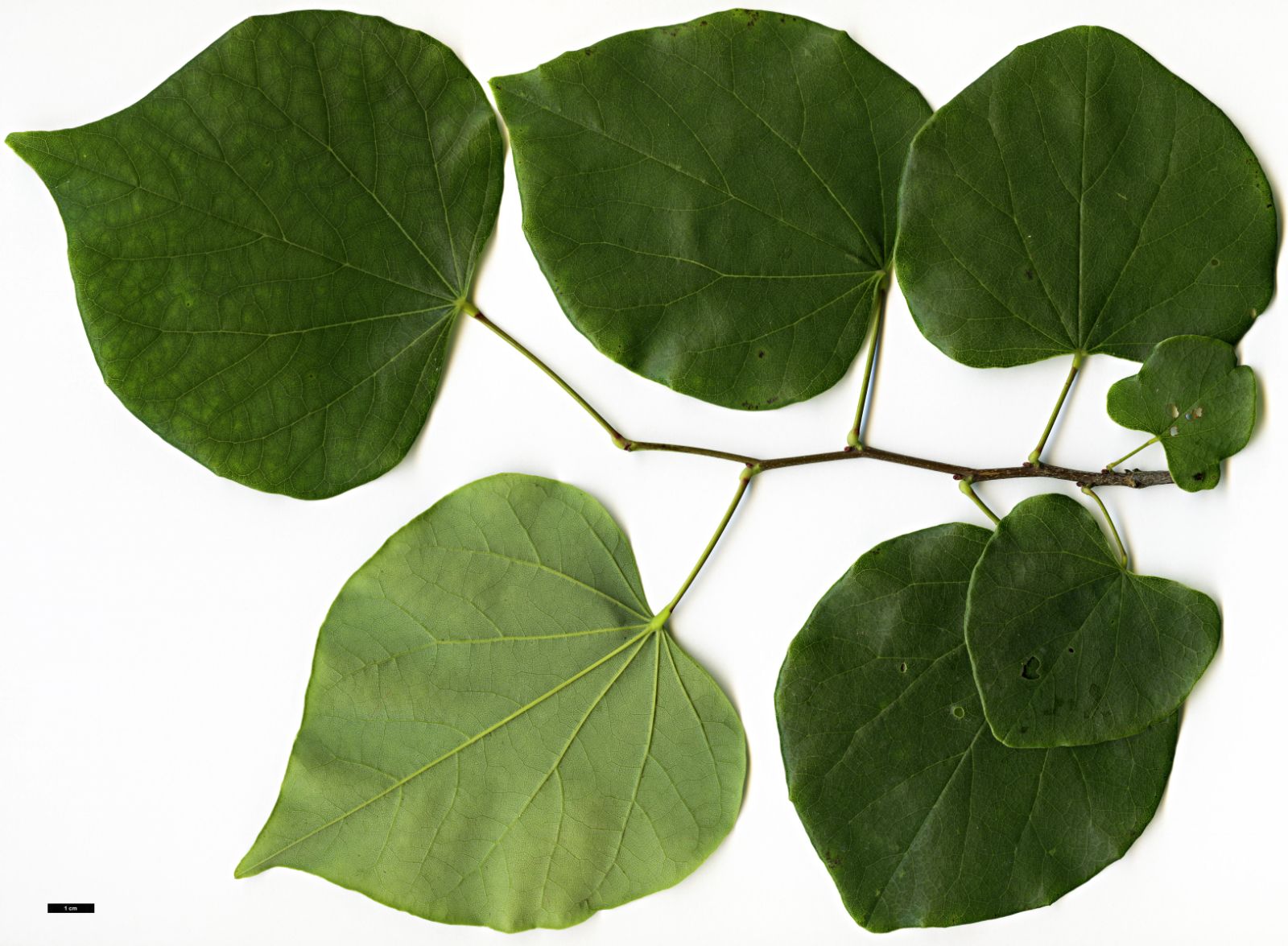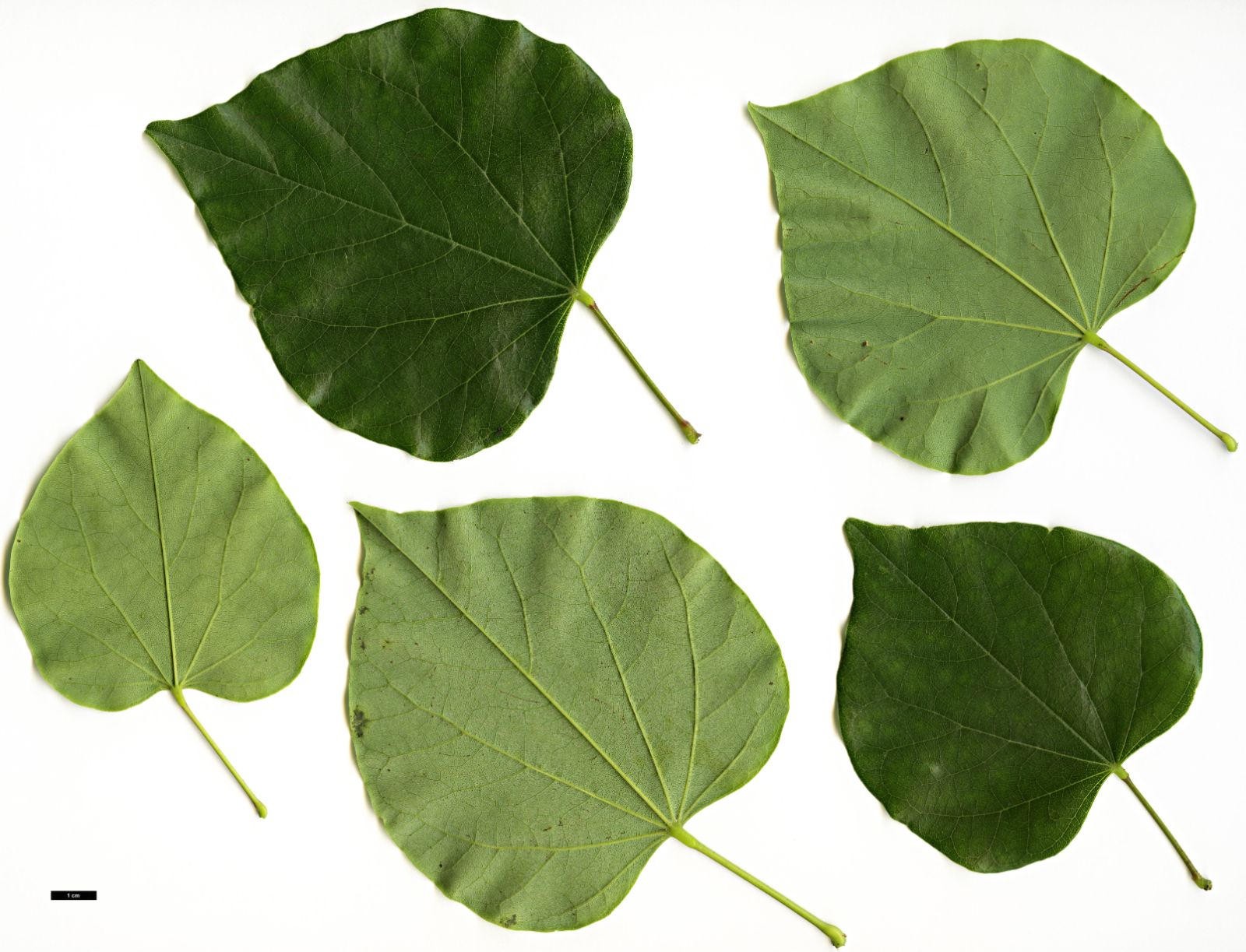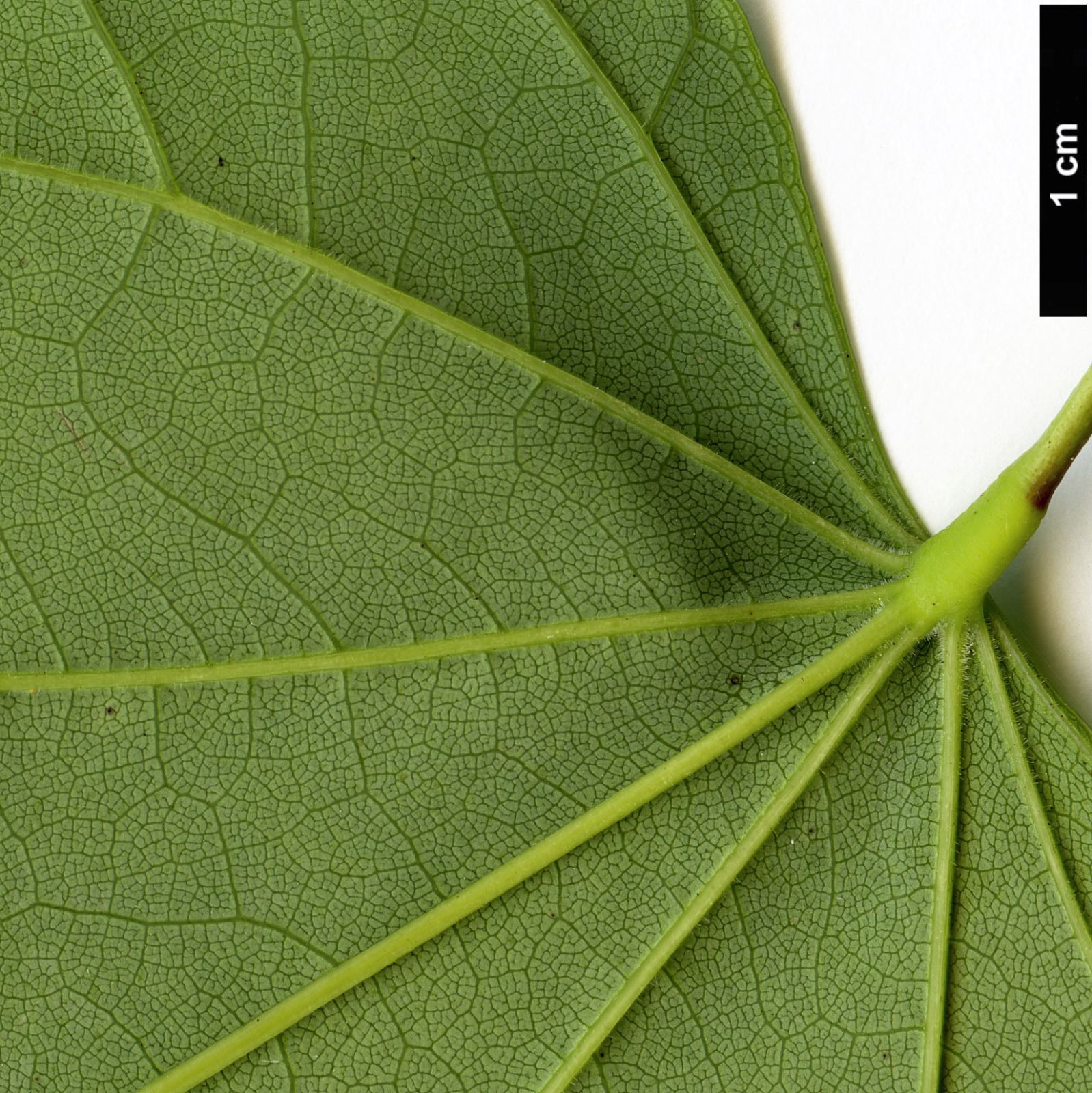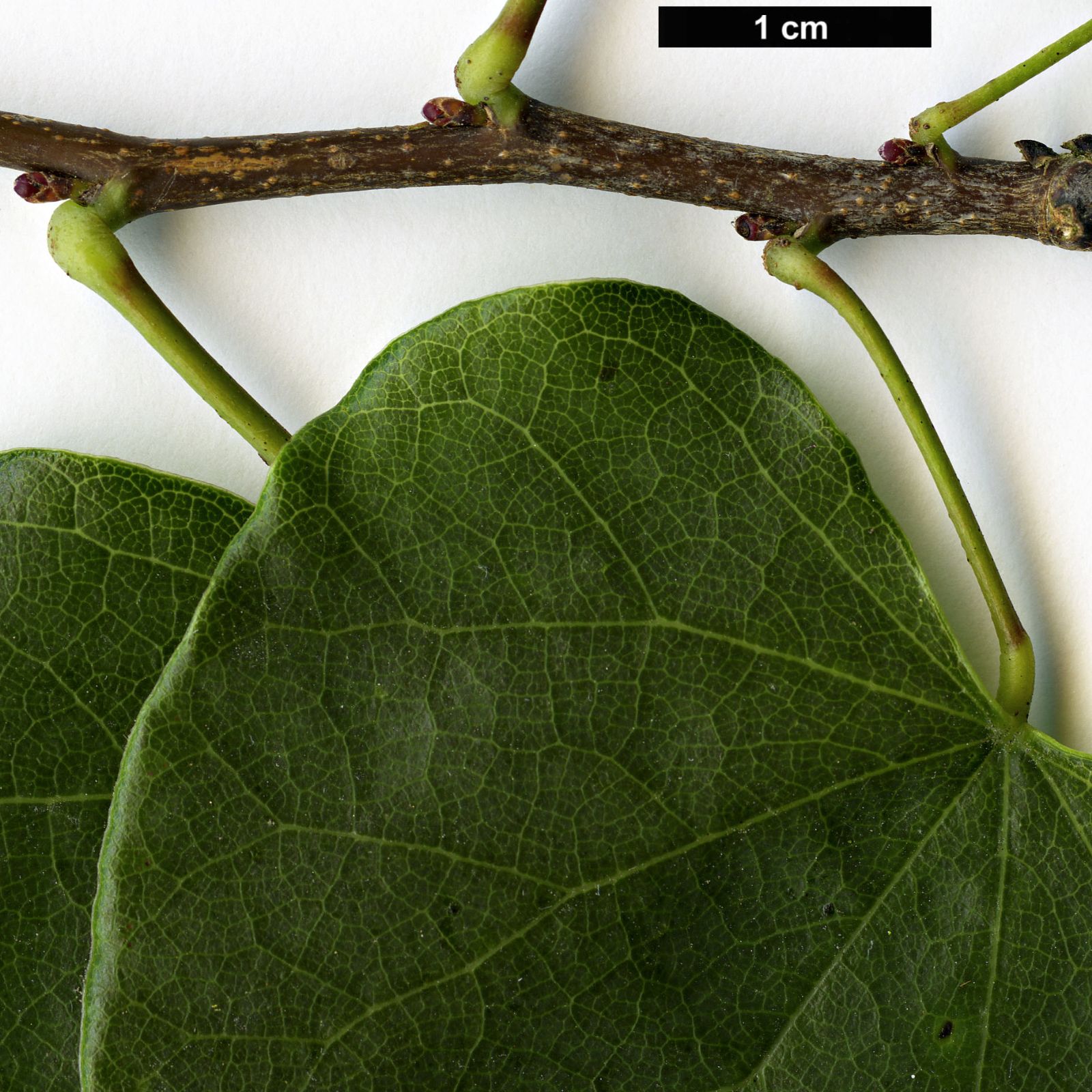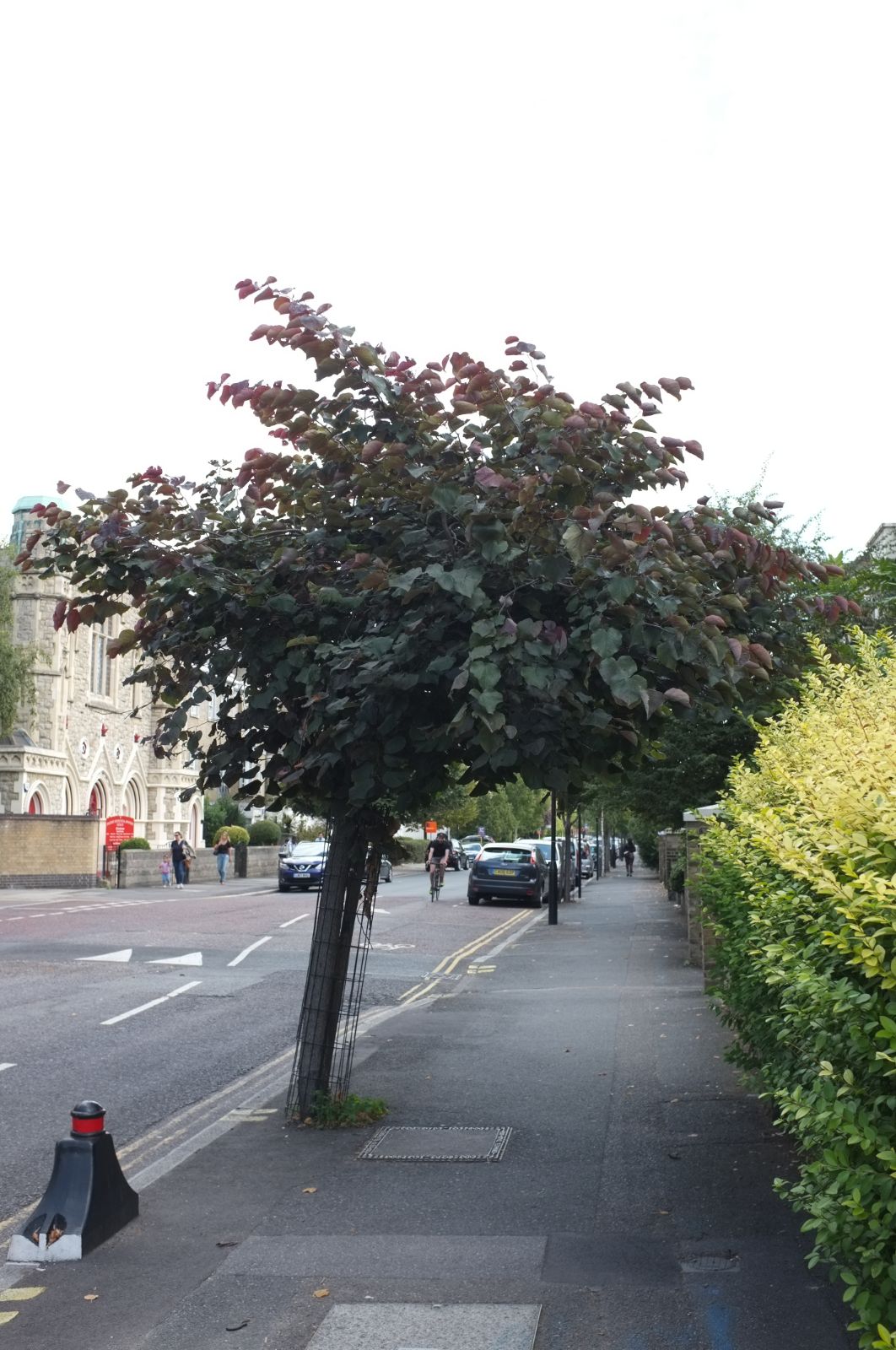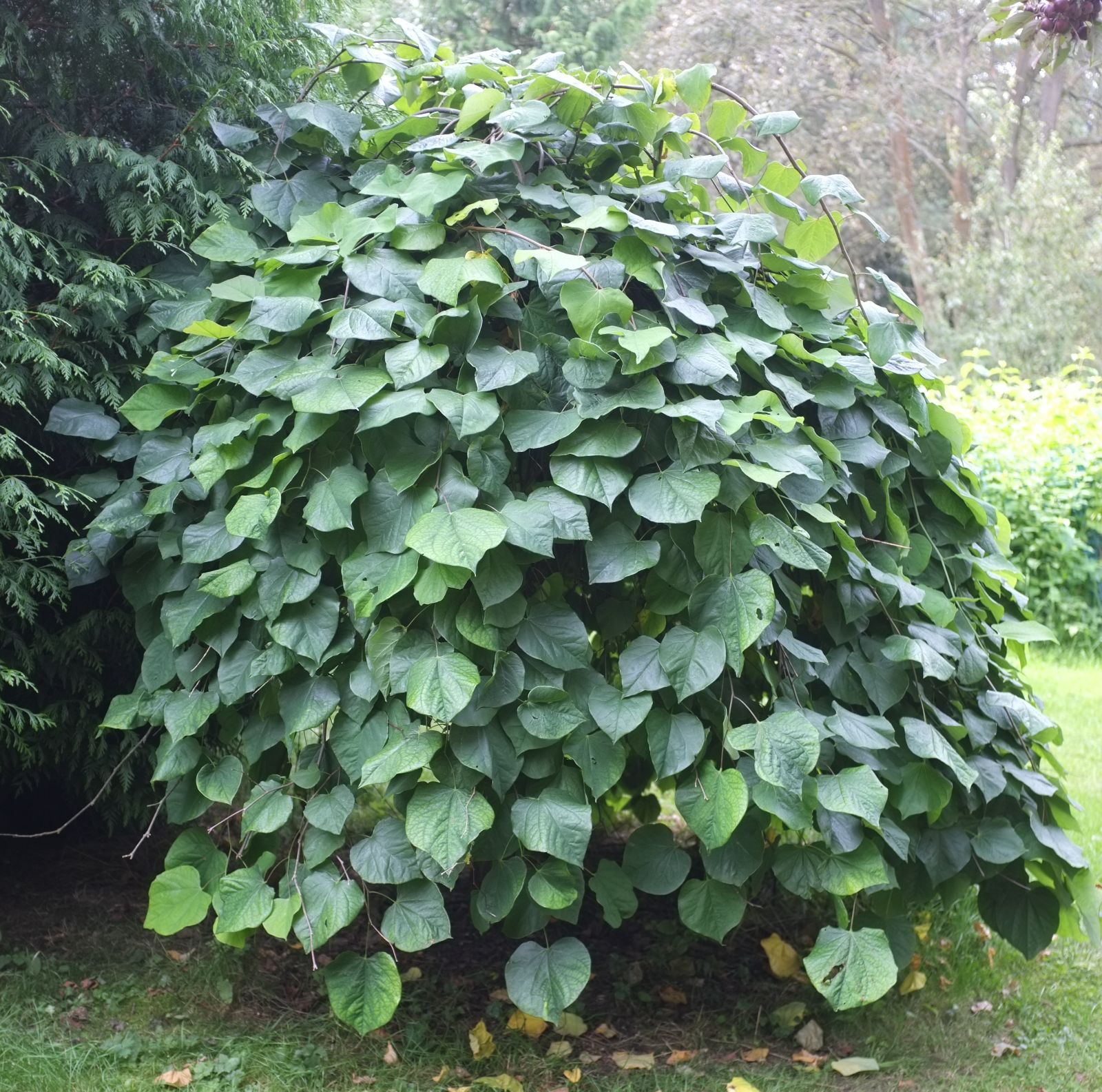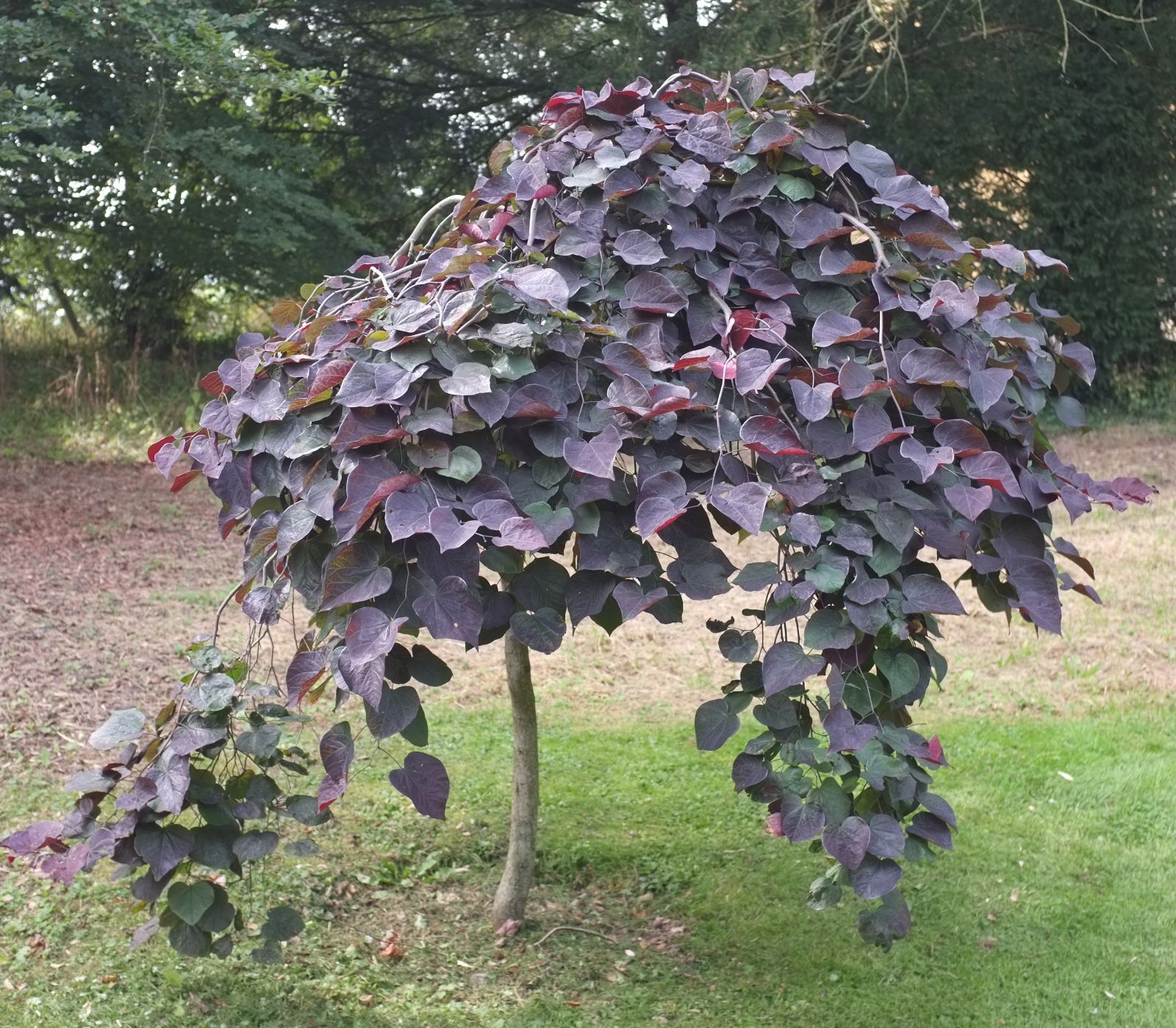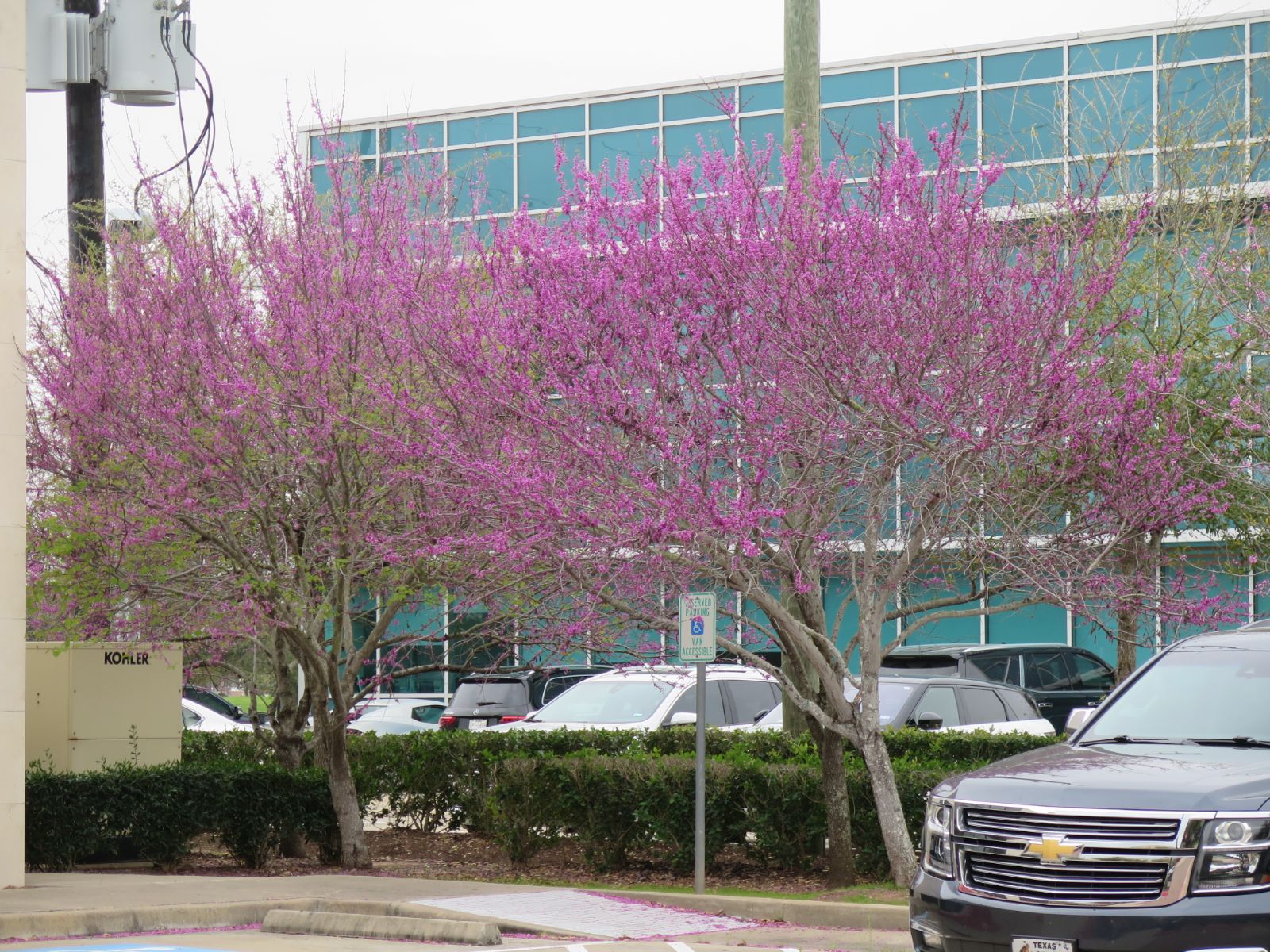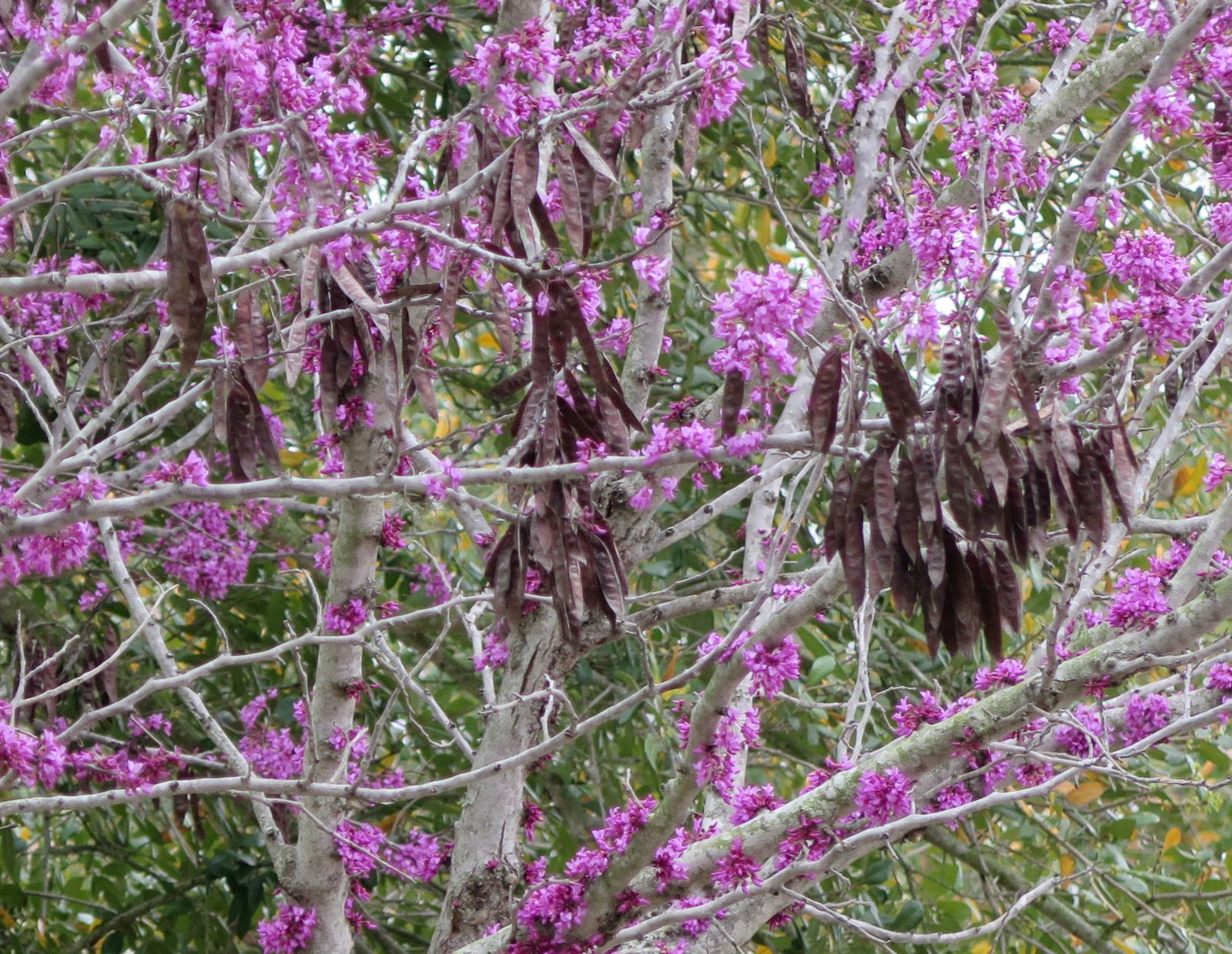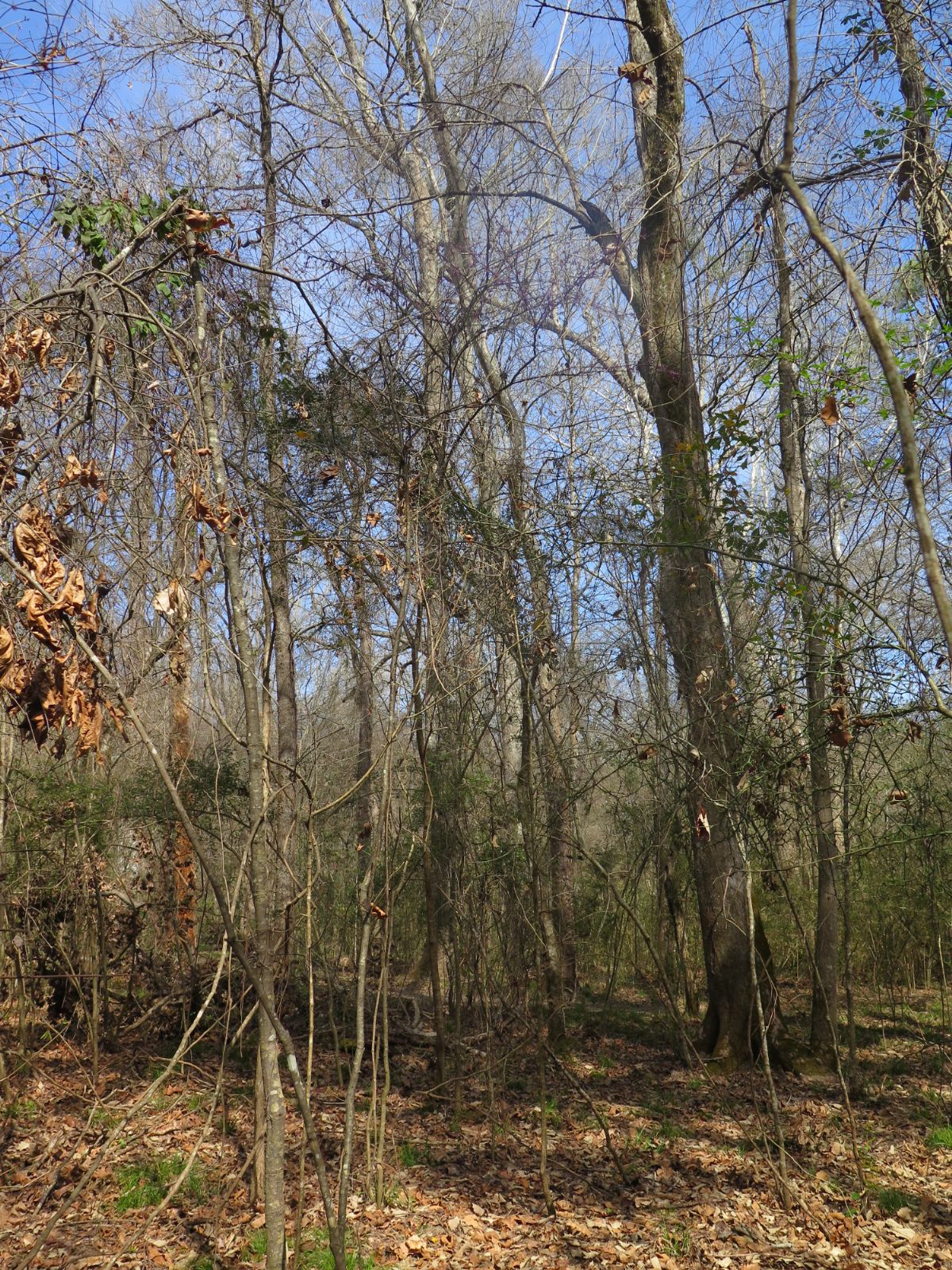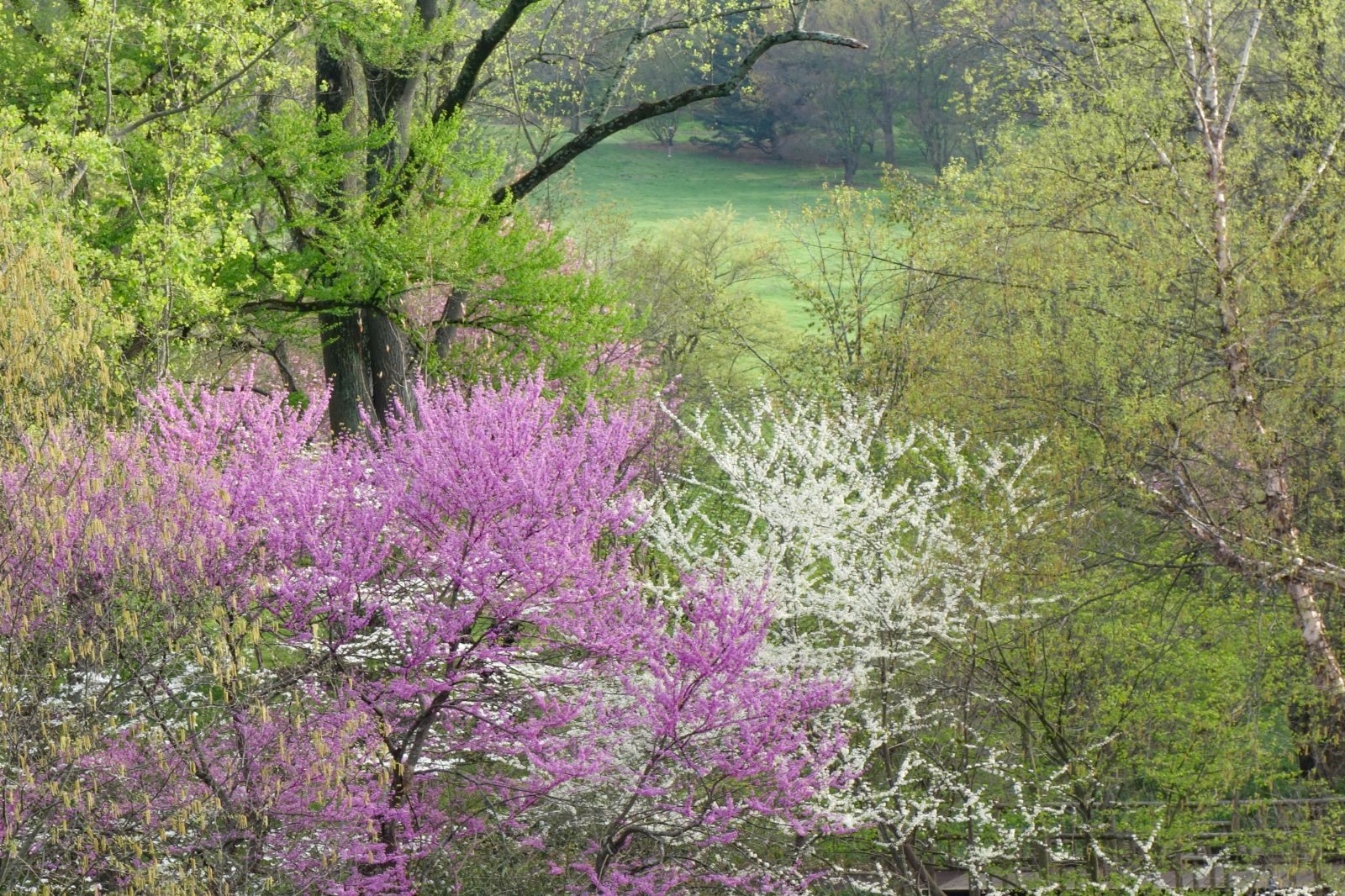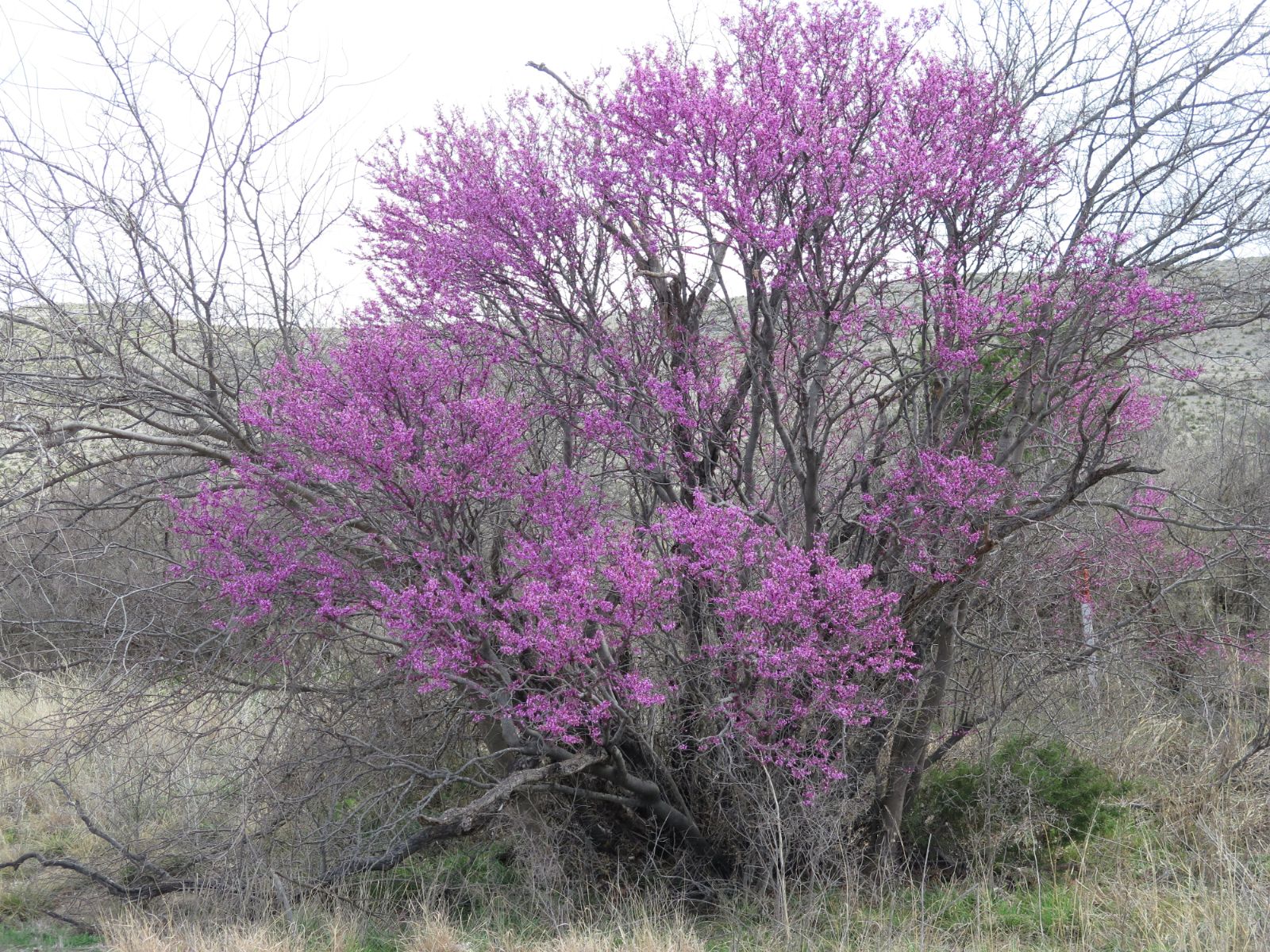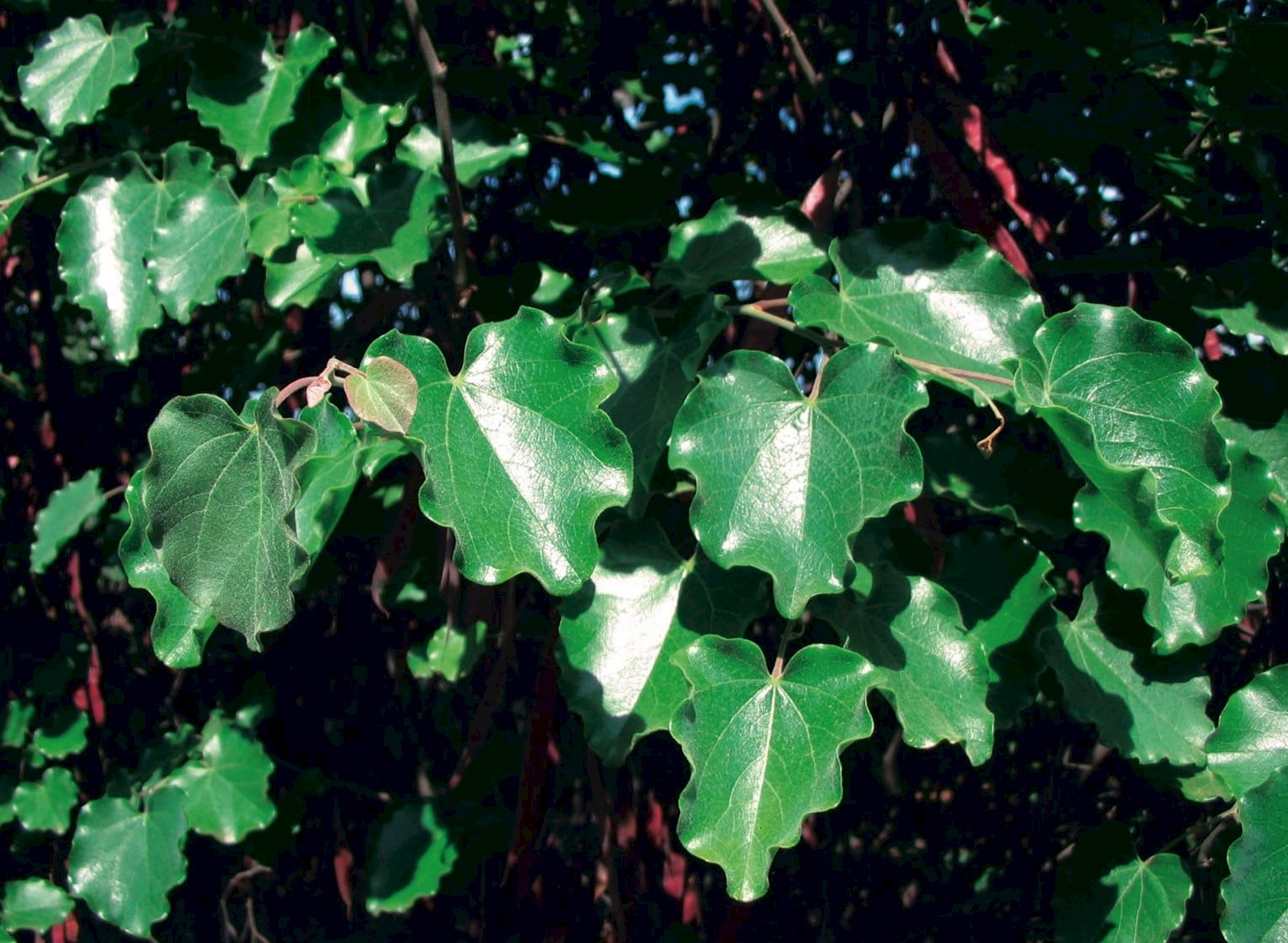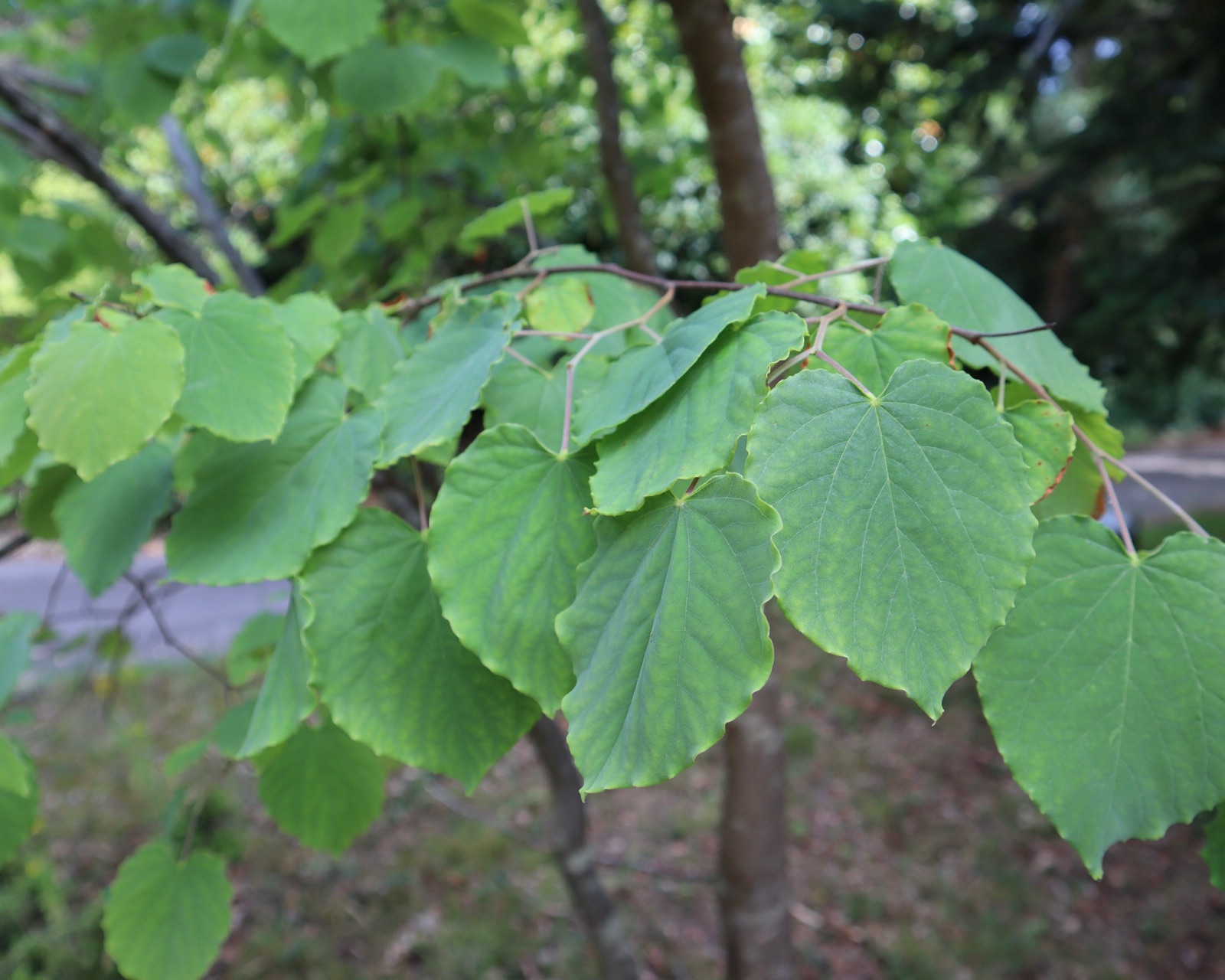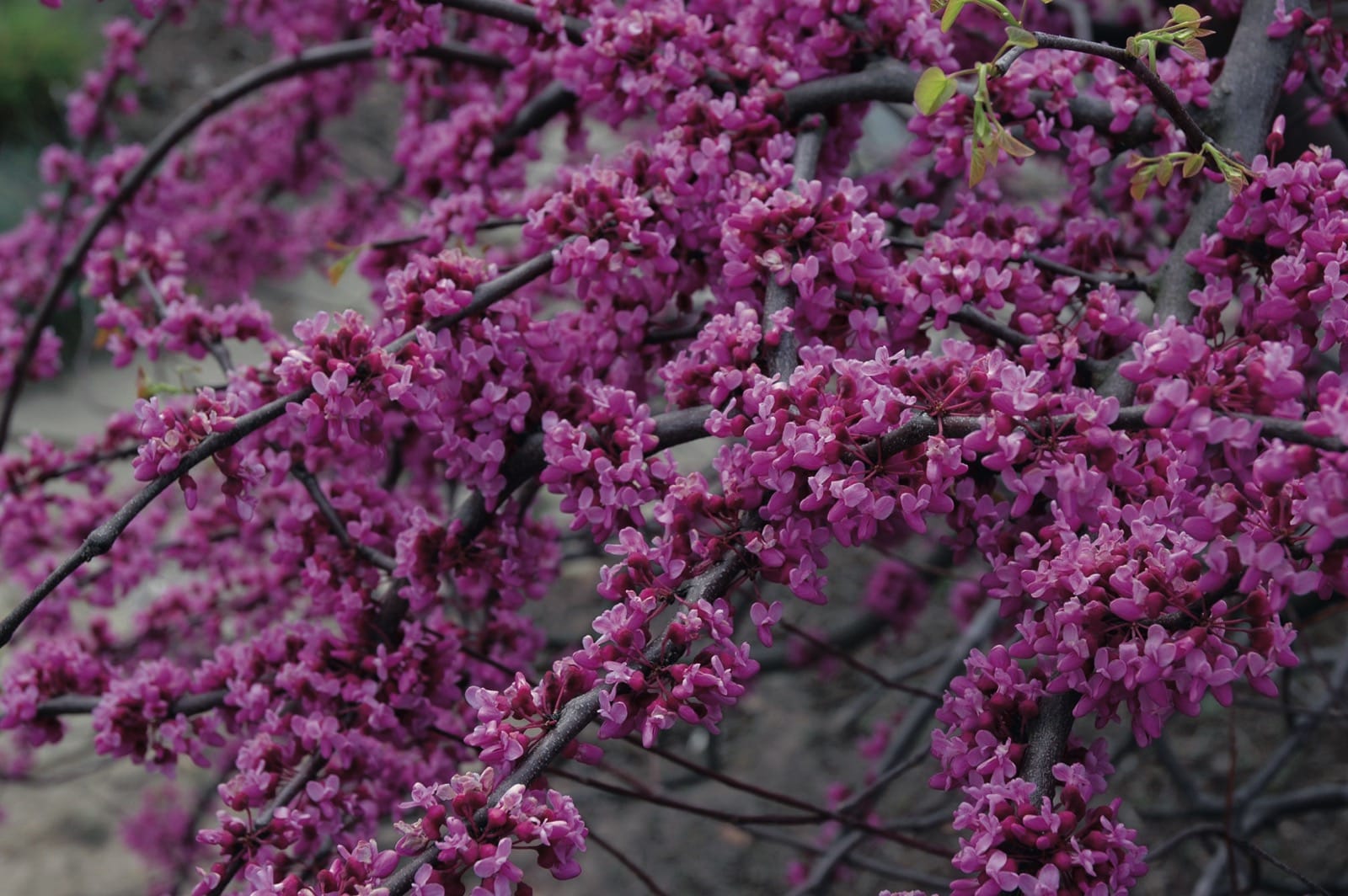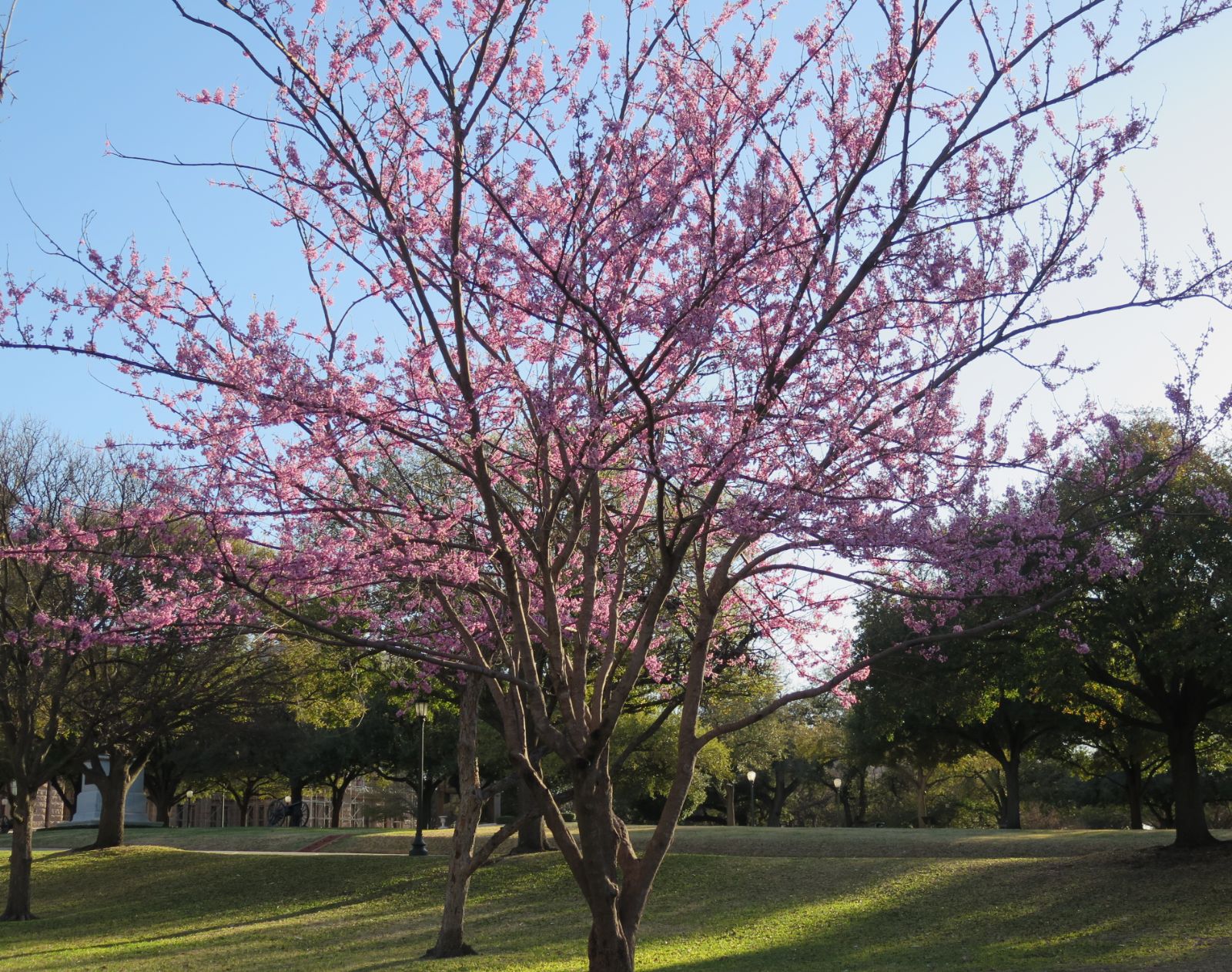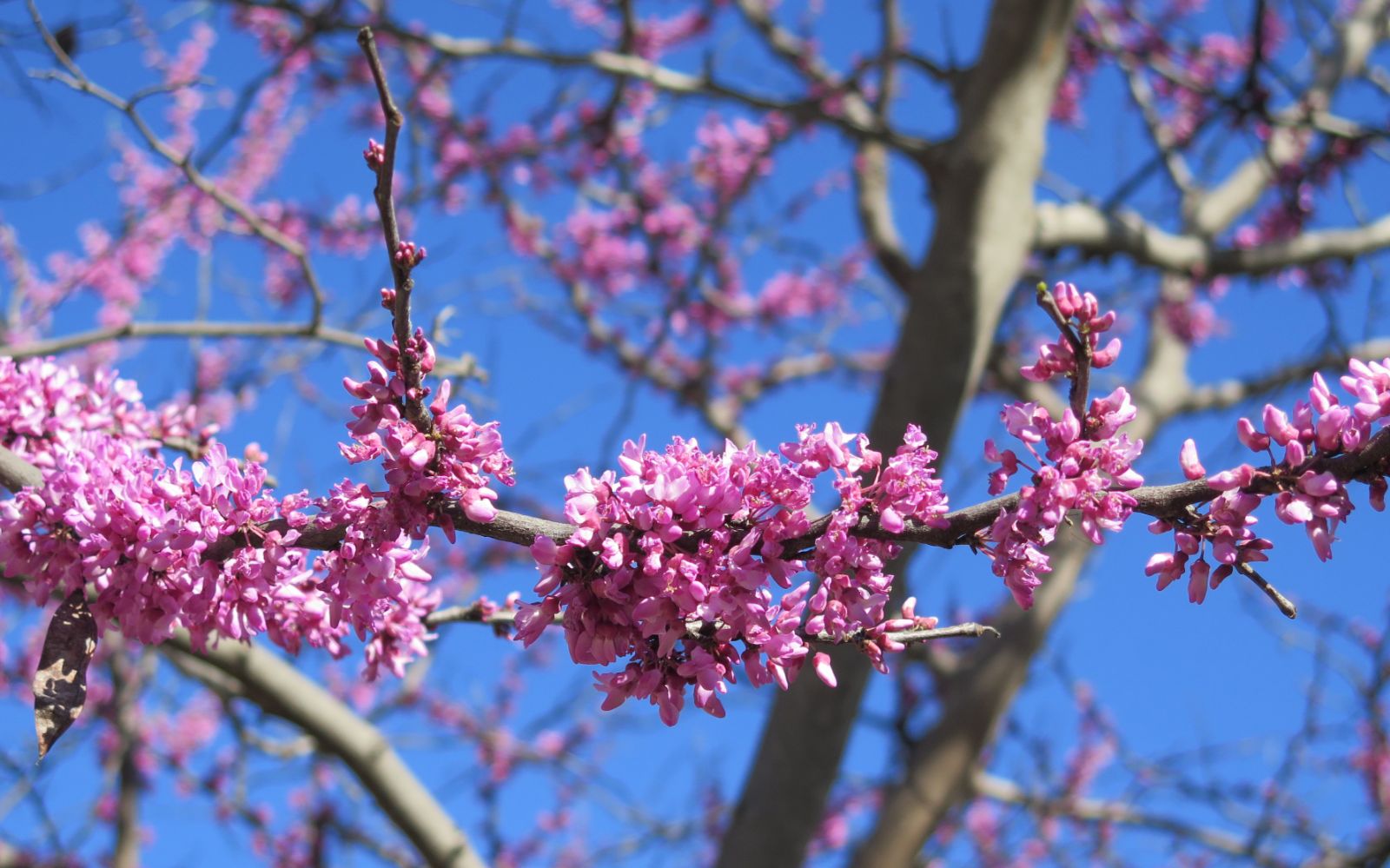Cercis canadensis
Credits
Article from Bean's Trees and Shrubs Hardy in the British Isles
Article from New Trees by John Grimshaw & Ross Bayton
Recommended citation
'Cercis canadensis' from the website Trees and Shrubs Online (treesandshrubsonline.
Genus
Common Names
- Redbud
A deciduous tree occasionally over 40 ft high in a wild state, more often a tall, spreading shrub in cultivation. Leaves broadly heart-shaped, pointed, 3 to 5 in. across, often wider than long; glabrous or thinly downy beneath. Flowers pale rose, 1⁄2 in. long, each on a stalk as long as itself, produced in clusters (fascicles) of four to eight blossoms; calyx 1⁄6 in. long, red. Pod about 3 in. long, 1⁄2 in. wide, pink when fully grown, but rarely seen in this country. Flowers in May and June.
Native of the eastern and central United States, in some districts so plentiful as to make a conspicuous feature in the landscape when in flower. Although one of the most beautiful of N. American trees, it is not so striking in this country, and does not bear comparison with C. siliquastrum for beauty in our gardens. It is quite easily distinguished from that species by its leaves, which are thinner, brighter green, and pointed; the flowers are not so large.
From the Supplement (Vol. V)
† cv. ‘Forest Pansy’. – Foliage purple throughout the season. Raised in the USA.
From New Trees
Cercis canadensis L.
Eastern Redbud
This species was described by Bean (B579, S160) and Krüssmann (K312). The following key to the varieties is adapted from Hopkins (1942), but it should be noted here, additionally, that although the leaves of var. canadensis are usually rather acutely pointed, the leaves of the other two varieties may be rounded or have a blunt point; both such shapes may be found on the same shoot. The degree of pubescence on the shoot is also variable, and as the two taxa overlap in central Texas it is probable that there are intermediates there (L. Hatch, pers. comm. 2007). It is almost impossible to differentiate the varieties of C. canadensis when plants are flowering, as they are then without leaves. The morphology of varieties texensis and mexicana is somewhat intermediate between that of true C. canadensis and the Western Redbud C. occidentalis Torr. ex A. Gray (Isely 1975), which has very rounded leaves, and it is apparent that the variation in and taxonomy of southern and southwestern American redbuds is far from being clearly understood. Cercis occidentalis is sometimes included in C. canadensis var. texensis (see, for example, Biota of North America Program 1999–2008), or called C. orbiculata Greene (USDA/ARS, National Genetic Resources Program 2008), although this is a later name. There is also a dispute over the type specimen between Californian and Texan material (see Jepson Flora Project 2006), resolved differently by different factions. DNA evidence, however, suggests that C. occidentalis is rather distantly related to C. canadensis (Davis et al. 2002). Cercis occidentalis was described by Bean (B580) and Krüssmann (K312). In this account we discuss only the eastern populations.
| 1a. | Mature leaves thin and flexible, dull green on both surfaces, generally cordate, with acute apex; Canada (Ontario), USA (eastern states as far west as Texas) | var. canadensis |
| 1b. | Mature leaves thick and leathery, rich, deep-green and variably glaucous on both surfaces, reniform-cordate, usually with obtuse or emarginate apex | 2 |
| 2a. | Pedicels and immature branchlets glabrous; Mexico (?), USA (Oklahoma, Texas) | var. texensis |
| 2b. | Pedicels and immature branchlets densely tomentose; Mexico (northeast), USA (Texas) | var. mexicana |
f. alba Rehd
Flowers white.
var. mexicana (Rose) M. Hopkins
The two southern varieties of C. canadensis are restricted to arid areas with calcareous soils, reflected in their morphology. They both have thick, leathery leaves, shiny and glaucous, which reduces evaporative water loss. The pedicels and stems of var. mexicana are covered in a dense woolly tomentum, while those of var. texensis are glabrous. Hopkins 1942. Distribution MEXICO: northeast (incl. Coahuila, Nuevo León, San Luis Potosí); USA: Texas (Trans-Pecos). Habitat Dry, rocky, calcareous hills. USDA Hardiness Zone 7b/8a. Conservation status Not evaluated. Illustration NT241.
A shrubby tree of about 3 m tall and 5 m wide seen at the JC Raulston Arboretum in 2006 was a good example of this taxon (and may be the clone named ‘Sanderson’: see Hatch 1998–2006). The uppersides of the leaves appeared slightly pewtered, caused by a light layer of glaucous wax overlying their glossy surface, and they had beautifully undulate margins. The dark crimson fruits were also attractive. The taxon as a whole seems to be infrequent in cultivation, but good leaf forms should be sought out.
var. texensis (S. Watson) M. Hopkins
Synonyms
C. reniformis A. Gray
See above for distinguishing characters. Distribution MEXICO (?); USA: Oklahoma (Arbuckle Mts.), Texas (central and western). Habitat Dry calcareous outcrops and exposed escarpments. USDA Hardiness Zone 6b. Conservation status Not evaluated. Illustration NT242.
Although sometimes said to be more shrubby than truly arborescent, var. texensis can make a rounded small tree to 10 m (Dirr 1998). With its big glossy green leaves it is attractive through the growing season. Selected clones include ‘Oklahoma’ with rosy magenta flowers, which J.C. Raulston rated extremely highly, and ‘Texas White’ with ‘masses of pure white flowers – stunning in bloom’ (Raulston 1986). More recent is the pendulous ‘Traveller’, with large leaves that flush copper-red but turn green as they mature, and rose-pink flowers (Dirr 1998); a specimen in the JC Raulston Arboretum is making a nice dome.
Both var. texensis and var. mexicana would appear to be good candidates for gardens of Mediterranean climate, as they are somewhat less hardy than C. canadensis from the more northerly parts of its range. Var. canadensis itself varies in hardiness dependent on its provenance, and gardeners in truly cold places such as Minnesota should choose a tree of local origin (Raulston 1986, Dirr 1998).

